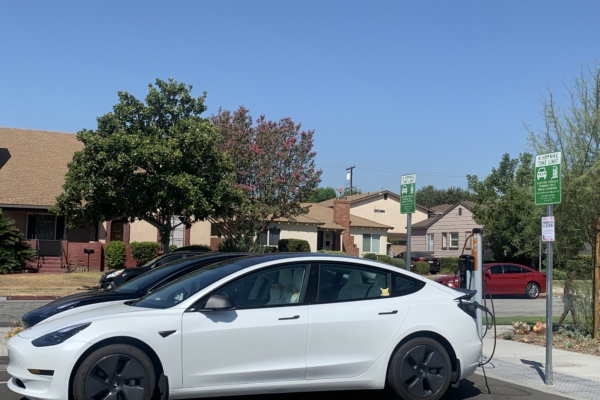Many consumers view second-hand electric cars as the most economical option on the current market, but experts advise considering several key questions before making a purchase: How long can the battery of a used electric car last? Is it still under warranty? Are there eligibility for tax credits after purchase? What is the charging speed? How many years are you planning to use it?
According to the US testing magazine “Consumer Report,” due to factors such as slowing demand, higher depreciation rates, and tax credit discounts, used electric cars are cheaper than gasoline cars or hybrid electric cars on the market. Moreover, there are many reliable and affordable used electric cars available.
The good news is that consumers who purchase these reliable and affordable used electric cars may qualify for a $4,000 federal tax credit; in terms of the discount strength, consumers can get more features for the same price with a new electric car. Additionally, most electric car batteries nowadays have relatively long lifespans and warranty periods.
The bad news is that used electric cars have some significant flaws, especially when consumers purchase electric cars that are over 10 years old, their reliability cannot be compared to gasoline cars or hybrid electric cars.
Before buying a used electric car, the first thing to consider is how long the battery can last.
Alex Knizek, Deputy Director of the Automotive Testing Center at “Consumer Report,” stated that even though the lifespan of electric car batteries is long, there will come a day when they need to be replaced, and the cost of replacing the battery might exceed the purchase value of the car itself.
Research shows that many car owners need to spend at least $15,000 to replace their vehicle’s battery pack. A report by the research firm Recurrent also found that 13% of electric cars produced before 2015 needed a battery replacement; in contrast, only 1% of electric cars produced after 2016 required a new battery.
The simplest way to check the health of a used electric car’s battery is to compare the estimated range when the battery is fully charged with the EPA’s original estimate.
It can save consumers a significant amount of money by understanding how long the warranty period of the electric car battery is before making a purchase.
“Consumer Report” found that almost all electric cars come with battery warranties, typically for up to 8 years or 100,000 miles, with some electric cars (including certain Tesla models) having even longer warranty periods. This warranty also covers related components such as the battery control module but is usually shorter than the battery warranty period.
The warranty terms and conditions will be listed in the owner’s manual. For example, Ford states that during the warranty period, if the battery charge falls below 70%, the dealership will repair or replace the battery for the owner; however, if the owner fails to update the software on time, the dealership can refuse to provide warranty service.
This means that if the used electric car that consumers are interested in is within the warranty period, they do not need to worry about paying expensive battery repair costs.
Exclusive data from “Consumer Report” reveals that the reliability of most older electric cars is below average, and even the reliability of newer electric cars lags behind traditional gasoline cars or hybrid electric cars.
“Compared to traditional automobiles, electric car technology is still in its early stages, and with the introduction of each new electric car model, the technology will rapidly change. Therefore, consumers interested in new electric cars may consider leasing instead of buying,” Knizek said.
From a maintenance perspective, if consumers purchase a certified and long-warranty used electric car, they may save some maintenance and operating costs compared to traditional cars.
Experts also recommend that consumers check that the vehicle has the latest software and no outstanding recall notices before purchasing a used electric car.
It is important to note that the purchase price promoted by dealerships already includes federal tax credits, but this does not guarantee that consumers will ultimately receive the credit. Therefore, before making a purchase, consumers should carefully read the terms on the dealership’s website and request a detailed out-the-door price.
To qualify for the tax credits, both the used electric car and the consumer must meet a series of broad requirements, including that the pre-tax price of the used electric car cannot exceed $25,000, it must be sold by an authorized dealer, the production year of the model must be at least two years earlier than the current calendar year, and the buyer’s annual income must be below a specified threshold, and so on.
Some older electric cars have slower charging speeds: Most older electric cars have a maximum charging acceptance rate of 50 kW, so even when using fast charging stations with output power of 100 kW, 150 kW, or even 350 kW, the charging cannot be accelerated.
Experts at “Consumer Report” believe that charging at public charging stations is usually more expensive than charging at home; if consumers cannot install a home charging station, the cost of charging may end up being as much as fuel costs.
The rewritten and translated article above provides insights into the considerations consumers should have when buying a used electric car, including battery lifespan, warranty, tax credits, and charging speeds. It emphasizes the importance of understanding the potential costs involved and the reliability of older electric car models compared to newer ones.

